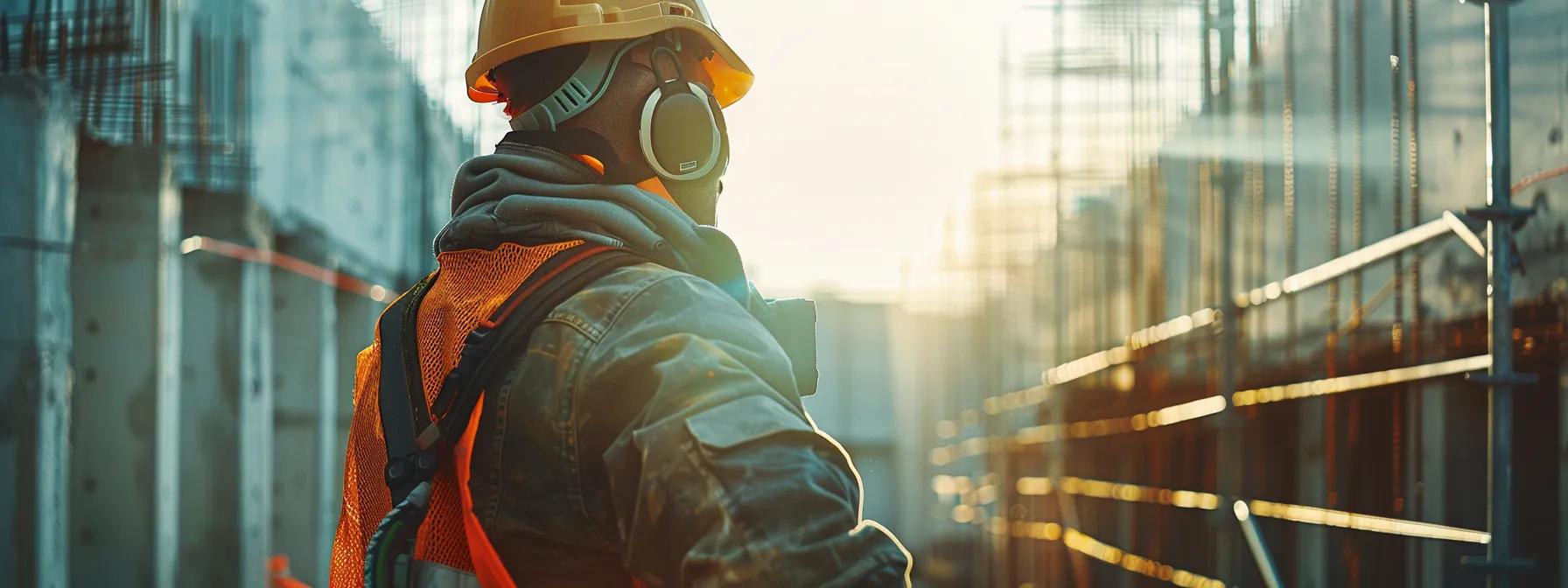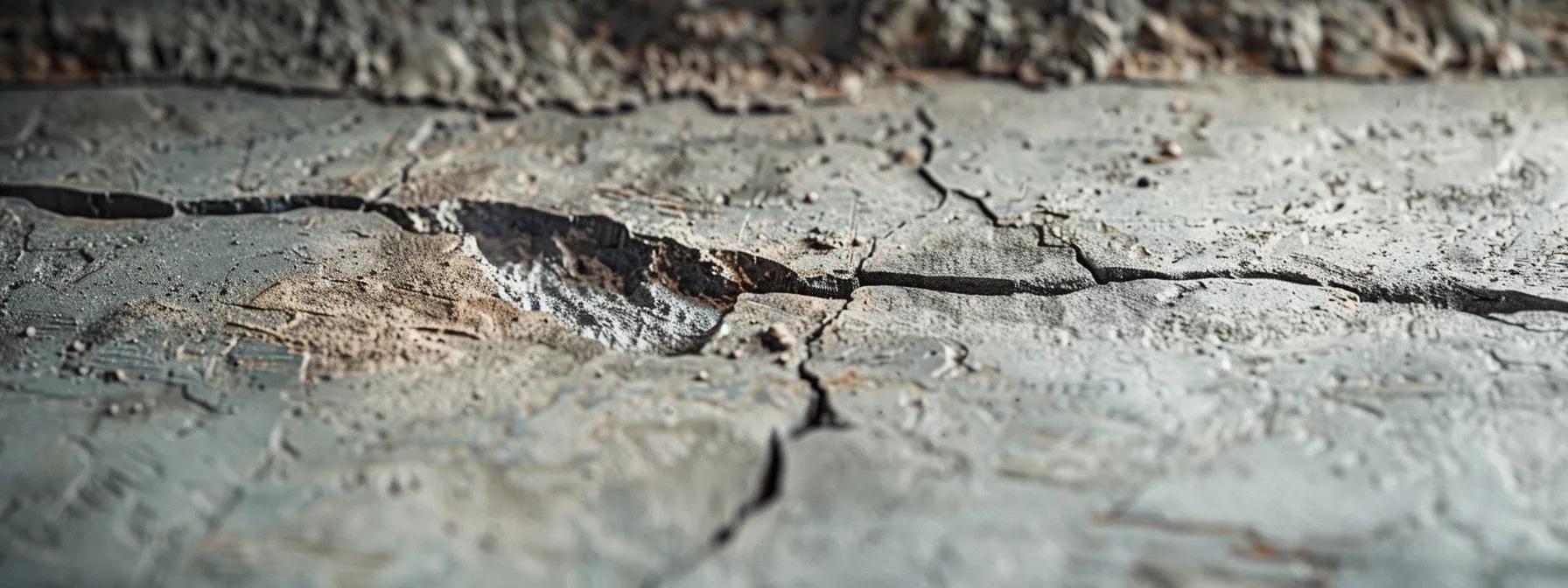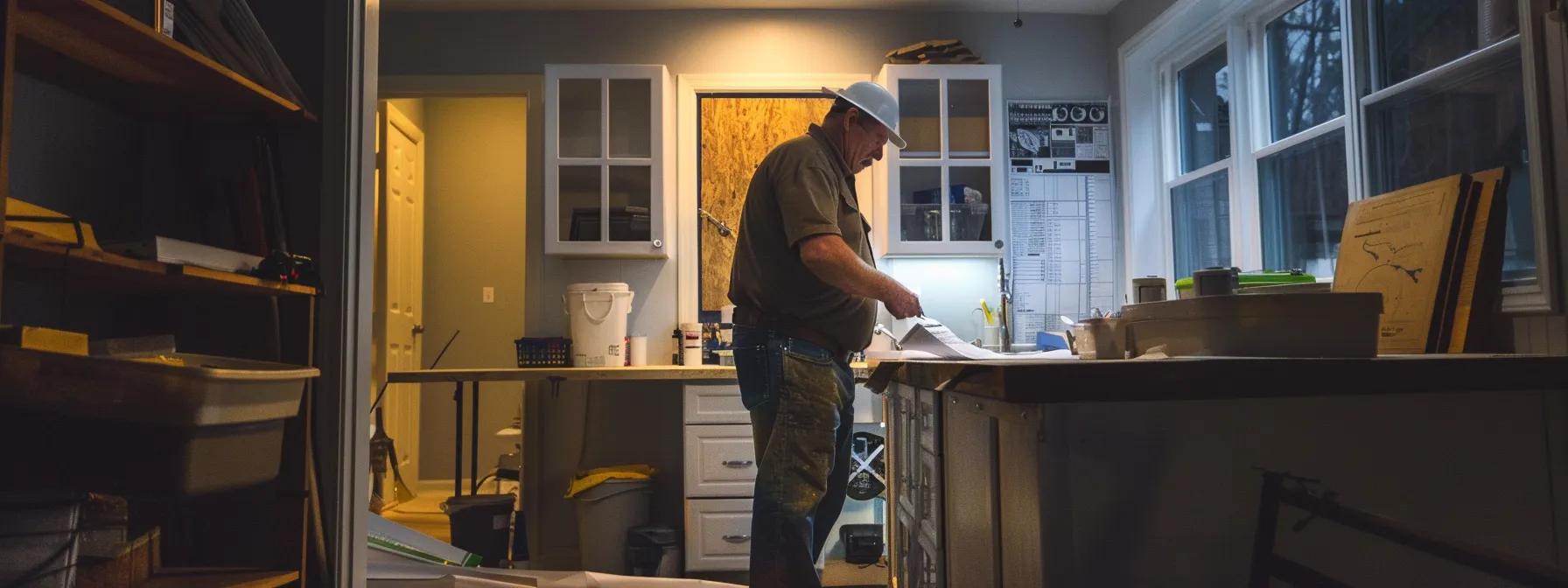Foundation Repair Techniques for Residential Stability
At Pier Foundation Repair Portland OR, we know a safe, secure home starts with a strong foundation. Cracked walls, uneven floors, and settling issues aren’t just cosmetic—they can signal serious structural problems. That’s why early detection and the right repair approach matter.
In this guide, we walk through proven foundation repair techniques tailored for Portland homes. From common signs like sticking doors and bowing walls to the causes behind them—like shifting soil and poor drainage—we cover it all.
Here’s what we dive into:
- Underpinning solutions using steel, helical, or concrete piers to stabilize and lift foundations
- Slab lifting methods like mudjacking and polyurethane foam injection
- Wall reinforcement with carbon fiber straps and wall anchors
- Moisture and soil control to prevent future damage
We also explore eco-friendly materials like precast concrete and epoxy sealants that strengthen your foundation and extend your home’s lifespan.
With years of hands-on experience in foundation repair in Portland OR, we’re here to help you understand your options—and make smart, lasting choices to keep your home strong for the long haul..
Identifying Common Residential Foundation Problems
Recognizing common foundation problems is critical before issues escalate into costly repairs. We explain key signs that your foundation might be compromised, including cracks in walls and floors, sticking doors or windows, uneven floors, gaps between structural elements, and bowing foundation walls.
Recognizing Telltale Cracks in Walls and Floors
Cracks in walls and floors indicate not just superficial wear but possibly active movement in the foundation. These cracks can be thin hairline fractures or larger splits caused by settlement when the soil compresses or shifts. Horizontal cracks often signal lateral movement, while vertical cracks may widen over time, leading to further structural damage. We measure the width and depth of cracks and monitor them over time, especially in areas with expansive clay and moisture variations. Early detection allows us to implement targeted repair solutions, such as epoxy injections or underpinning, to seal the cracks and stabilize the structure.
Addressing Sticking Doors and Windows Indicating Shifts
If your doors and windows stick or become misaligned, it may be a sign that your foundation is shifting. Minor foundation shifts create uneven settlement, putting pressure on door frames and window sills. Our inspections include a close examination of these frames. Even a slight misalignment can eventually lead to more significant cracking and distortion. We recommend a thorough foundation inspection to determine the extent of the shift and advise stabilization techniques—such as underpinning or wall anchors—to correct misalignment and support the structure. Integrating moisture control solutions further helps stabilize the soil beneath your home.
Assessing Uneven or Sloping Floors for Settlement Issues
Uneven or sloping floors indicate that settlement is occurring beneath your foundation. Floor unevenness not only affects appearance but poses safety risks. Using leveled instruments and laser-guided tools, we precisely measure slopes to determine if the issue is localized or part of a wider foundation failure. Uneven floors are often linked to expansive clay or poor drainage; remediation techniques such as underpinning or installing french drains can effectively lift and level affected slabs.
Investigating Gaps Between Walls, Floors, or Ceilings
Gaps between walls, floors, or ceilings are subtle signals of structural movement caused by foundation settlement, fatigue, or thermal expansion. Over time, these gaps can widen and allow moisture and pests to infiltrate the building. We document these separations with high-resolution photography and measurements. When gaps are linked to foundation issues, we sometimes reinforce walls or implement underpinning to correct the underlying movement.
Evaluating Bowing or Leaning Foundation Walls
Bowing or leaning walls are critical signs of structural instability caused by soil or hydrostatic pressure. Using inclinometers and laser levels, we accurately measure the extent of bowing. Repairs often involve installing steel beams, wall anchors, or carbon fiber straps to counteract lateral pressure and realign the walls. Our approach begins with evaluating external soil conditions and drainage systems to ensure that the solution addresses both current issues and helps prevent future instability.
Exploring Underpinning Methods for Enhanced Home Stability

Enhancing home stability often begins with underpinning. We have developed several underpinning techniques designed to transfer the structural load from unstable soil to deeper, stable strata. Our methods include using steel piers, helical piers, and concrete piers, each proven effective in mitigating risks and enhancing structural integrity.
Utilizing Steel Piers for Deep Foundation Support
Steel piers provide deep foundational support by extending into stable soil layers or reaching bedrock. We assess soil composition through geotechnical surveys and design a strategic layout for placing each pier. The installation involves drilling the pier into the ground, verifying vertical alignment with laser tools, and securely connecting it to the foundation using high-strength bolts. Steel piers offer unmatched strength, durability, and environmentally friendly performance, making them ideal for homes on expansive clay or unstable soils.
Implementing Helical Piers for Versatile Ground Conditions
Helical piers feature helical plates that cut into the soil as they are driven underground. Their versatile design allows them to grip loose or saturated soil effectively. Our installation process uses hydraulic machines to rotate and drive the piers deep. Helical piers offer rapid installation and can reduce settlement by up to 30% compared to traditional methods. Once installed, they are secured with connection brackets to evenly distribute your home’s weight evenly, making them an excellent choice for urgent repairs in moisture-prone areas.
Employing Concrete Piers for Foundational Strength
Concrete piers involve pouring high-strength concrete into pre-drilled or excavated holes. Once the concrete cures, it forms durable columns that bear significant structural loads. We extend existing support columns as needed and use specially formulated concrete mixes with additives for strength and rapid curing. Steel brackets integrate new piers with the existing foundation, ensuring even load distribution. Concrete piers are highly customizable, making them a reliable solution for moderate to severe settlement.
Understanding Drilled Pier Solutions in Residential Foundation Stabilization
Drilled piers are a specialized subset of concrete pier solutions involving deep drilling and reinforced concrete fill. Ideal for deeper foundation support and areas with contaminated or unstable upper soils, drilled piers provide a continuous, reinforced column that bridges the building to stable soil layers. Our process begins with a detailed geotechnical analysis, followed by drilling, inserting reinforcing steel, and filling with high-strength concrete. This method is especially valuable for historic homes or structures with severe settlement.
Considering Mass Concrete Underpinning for Shallow Foundations
Mass concrete underpinning extends existing foundations by adding a reinforced concrete slab over a larger area. This method is effective for homes with lighter loads or where invasive methods are not ideal. We excavate around the existing foundation, install a compacted fill layer, construct formwork, and pour a specially designed concrete mix. Steel mesh or rebar is incorporated to enhance durability. Once cured, the slab distributes the structural load more evenly, reducing stress on any single point.
Below is a table summarizing various underpinning methods:
Slab Jacking and Lifting Techniques for Concrete Foundations
When a concrete slab sinks or settles due to soil erosion or water damage, slab jacking and lifting restore its original level and prevent further deterioration. We outline modern methods, including traditional mudjacking and polyurethane foam injection. Each technique has advantages depending on settlement severity and soil conditions.
Raising Sunken Slabs With Mudjacking Procedures
Mudjacking involves drilling small holes in the slab and injecting a slurry—typically a mixture of water, cement, and sometimes sand—under high pressure to lift the slab. This method is cost-effective and can be completed in a few hours, making it ideal for minor to moderate settlements. It fills voids beneath the slab, restoring its level without complete replacement. We ensure proper evaluation before proceeding and often add reinforcements to prevent recurrence.
Applying Polyurethane Foam Injection for Slab Leveling
Polyurethane foam injection is a modern alternative in which a two-part foam is injected beneath the sunken slab. The foam expands to fill voids and lift the slab accurately. Advantages include a faster curing time, greater durability, and moisture resistance. The lightweight foam bonds with the existing foundation without adding extra load, making it ideal for regions with high water tables or sensitive soil conditions.
Comparing Slab Lifting Methods for Residential Applications
Choosing between mudjacking and polyurethane foam injection depends on the extent of settlement, soil conditions, and long-term performance expectations. While mudjacking is cost-effective for smaller settlements, polyurethane foam injection provides a more permanent and less invasive solution. Our decision matrix considers cost, durability, environmental impact, and installation time to recommend the best method for each situation.
Determining When Slab Jacking Is Appropriate
Early intervention is key. If a concrete slab begins to sink unevenly, creating gaps, cracks, or trip hazards, immediate action is necessary. Our evaluation includes measuring slab deflection and soil moisture levels. For localized settlement, slab jacking can restore level surfaces; for widespread issues, it is combined with overall foundation repair and soil stabilization. Case studies show that when slab jacking is paired with proper drainage (e.g., french drains, sump pumps), long-term performance improves and interior aesthetics are enhanced.
Wall Reinforcement and Crack Repair for Foundation Integrity

Wall reinforcement and crack repair are essential alongside slab repairs. Walls showing signs of bowing or cracking need immediate attention to prevent further deterioration. At Pier Foundation Repair Portland OR, we use methods like carbon fiber straps, wall anchors, and epoxy or polyurethane injections to reinforce and seal walls, ensuring long-term stability.
Applying Carbon Fiber Straps to Strengthen Bowing Walls
Carbon fiber straps are an effective, high-strength solution for stabilizing bowing walls. We prepare the wall surface, apply industrial-grade epoxy, and bond the straps externally. Tensioning the straps to precise specifications provides immediate corrective force, reducing further bowing by up to 40%. This method is especially useful in basements and other critical areas.
Installing Wall Anchors to Correct Lateral Wall Movement
Wall anchors are installed by drilling through the wall and extending an anchor into stable soil, effectively securing the wall in place. This quickly restores structural integrity by transferring load away from the compromised area. Our process includes meticulous evaluation and secure fastening with heavy-duty, corrosion-resistant anchors. When combined with carbon fiber straps, wall anchors provide a durable, dual-reinforcement system.
Using Epoxy or Polyurethane Injections for Sealing Foundation Cracks
To prevent water infiltration and further damage, we inject high-performance epoxy or polyurethane sealants into cracks. Epoxy is ideal for dry, non-porous cracks, as it creates a permanent bond. In contrast, polyurethane is preferred for moist or active cracks due to its flexibility and moisture resistance. Proper cleaning and port installation ensure the sealant fills the crack and restores structural strength.
Employing Masonry Patches and Sealants for Minor Repairs
For minor surface damage, masonry patches and sealants offer a cost-effective repair solution. We clean the area, apply a bonding agent, and smooth a patching compound over the crack. Once cured—and often painted to match—the repair creates a waterproof barrier that prevents further deterioration while maintaining the wall’s appearance.
Understanding the Role of Steel Beams in Wall Reinforcement
When walls exhibit extensive movement or damage, steel beams offer robust secondary support. Acting as a load redistribution mechanism, steel beams are integrated with existing structures using high-strength bolts and anchor plates. This method is a backbone solution for extensive reinforcement, ensuring even load distribution and long-term stability.
Below is a table summarizing various wall reinforcement techniques:
Addressing Soil and Water Issues for Long-Term Residential Stability
For lasting foundation stability, addressing soil and water issues is as important as structural repairs. The quality of the supporting soil and effective drainage systems greatly influence foundation performance. Our strategies focus on soil stabilization, proper grading, and drainage solutions to create an optimal environment for your foundation.
Implementing Proper Grading and Drainage Solutions
Proper grading directs water away from your foundation, reducing the risk of water infiltration and erosion. We assess the natural slope and recommend regrading and installation of efficient drainage systems such as french drains. French drains utilize perforated pipes laid in gravel-filled trenches to consistently divert water away. We may add catch basins and sump pumps in areas with severe water accumulation to maintain a dry environment and prevent soil swelling.
Managing Soil Moisture Content Around the Foundation
Excess soil moisture can cause expansion, erosion, and increased hydrostatic pressure against foundation walls. We utilize moisture detection systems to monitor the water content near your foundation and recommend installing moisture barriers and impermeable membranes, along with proper landscaping. Regular maintenance and inspection of drainage systems further help keep soil moisture levels consistent, enhancing the performance of underpinning and repair methods.
Considering Soil Stabilization Techniques for Problematic Ground
Soil stabilization methods improve the load-bearing capacity of unstable soils caused by expansive clay or loose sands. Techniques such as compaction grouting—injecting cementitious grout to bind loose particles—and chemical stabilization using additives offer immediate and long-term improvements. These methods ensure that your foundation rests on a steady, supportive base.
Installing Root Barrier Systems to Prevent Tree Root Damage
Mature tree roots can damage foundations by exerting pressure and aggravating cracks. We install root barrier systems made of high-density polyethylene or steel along the foundation perimeter to block invasive roots while allowing proper drainage. This protects the foundation and maintains aesthetically pleasing landscaping.
The Importance of Crawl Space Encapsulation for Moisture Control
Encapsulating the crawl space with a heavy-duty vapor barrier, insulation, and a dehumidification system prevents mold growth, wood rot, and moisture-related settlement. By sealing the crawl space and addressing any water infiltration, we create a stable, dry environment that protects the foundation and improves indoor air quality.
Below is a table summarizing soil and water management strategies:
Professional Assessment and the Repair Process for Your Home’s Foundation

Getting a professional foundation repair starts with the right assessment. At Pier Foundation Repair Portland OR, we take a step-by-step approach—beginning with a thorough inspection, followed by careful planning, and finishing with precise repairs. It’s how we deliver long-term solutions and help keep your home safe and stable for years to come.
The Significance of a Thorough Professional Foundation Inspection
Before any repair work begins, our team conducts an exhaustive evaluation of your foundation using visual assessments, measurements, moisture testing, and soil analysis with advanced tools like laser levels and ground-penetrating radar. This detailed inspection identifies both visible and underlying issues, allowing us to create a tailored, comprehensive repair plan.
Selecting a Qualified Foundation Repair Contractor
Choosing the right foundation repair company makes all the difference. With over 20 years of experience, we bring the right tools, techniques, and know-how to every job. We always suggest checking a contractor’s credentials, insurance, and local code knowledge. And don’t forget to ask for references and written estimates—it’s the best way to protect your investment and ensure lasting results.
Understanding Permits and Engineering Requirements for Foundation Work
Foundation repairs often require permits and adherence to local engineering standards. We handle all necessary paperwork and engineering assessments to ensure compliance with state and local regulations. This documentation is essential for quality, safety, and maintaining your home’s value.
Post-Repair Monitoring and Maintenance for Lasting Stability
After repairs are completed, regular monitoring is critical to maintain stability. We recommend follow-up inspections at one month, six months, and annually. In addition to professional monitoring, simple maintenance practices like cleaning gutters, proper landscaping drainage, and addressing minor cracks promptly help prevent future issues.
Frequently Asked Questions
Q: How do I know if my home’s foundation needs repair? A: Common signs include cracks in walls and floors, sticking doors and windows, and uneven floors. Widening gaps or bowing foundation walls indicate the need for a professional inspection to diagnose underlying issues.
Q: What underpinning method is best for a home built on expansive clay? A: For expansive clay soil, steel piers or helical piers are often the best options. These methods provide deep, stable support by redistributing structural loads to stable soil layers. A geotechnical evaluation helps determine the most effective strategy.
Q: Can slab jacking be used for all concrete slabs? A: Slab jacking works best for slabs with minor to moderate settling issues. For extensive damage or critically unstable soils, polyurethane foam injections or a combination of underpinning methods may be recommended. Our professional assessment guides the method choice for both immediate and long-term stability.
Q: How important is drainage in preventing foundation problems? A: Proper drainage is essential since water accumulation is a leading cause of foundation damage. Directing water away from the home through grading, french drains, and effective gutter systems minimizes soil expansion, erosion, and hydrostatic pressure on the foundation.
Q: What maintenance practices can help prevent future foundation issues? A: Regular maintenance is key. We advise keeping gutters and downspouts clean, maintaining proper grading and landscaping to direct water away from the house, and scheduling annual foundation inspections. Early repair of minor cracks or moisture issues can prevent them from becoming larger, more expensive problems.
With a proactive approach to foundation repair and a thorough understanding of these techniques, we at Pier Foundation Repair Portland OR are committed to ensuring that your home remains safe, stable, and secure. By addressing common foundation problems promptly, implementing underpinnings tailored to your soil conditions, and regularly monitoring repairs, we provide comprehensive, long-lasting solutions. Homeowners can trust our expertise to resolve existing issues and prevent future complications through ongoing maintenance and inspections.
